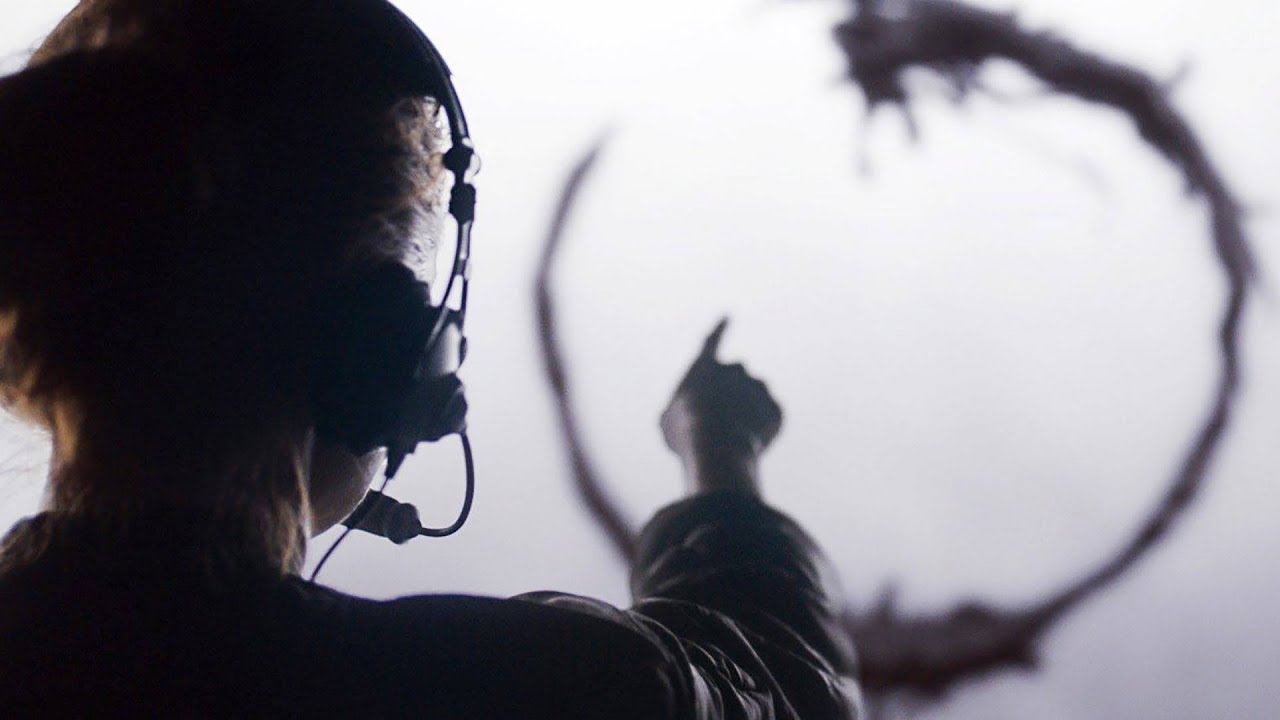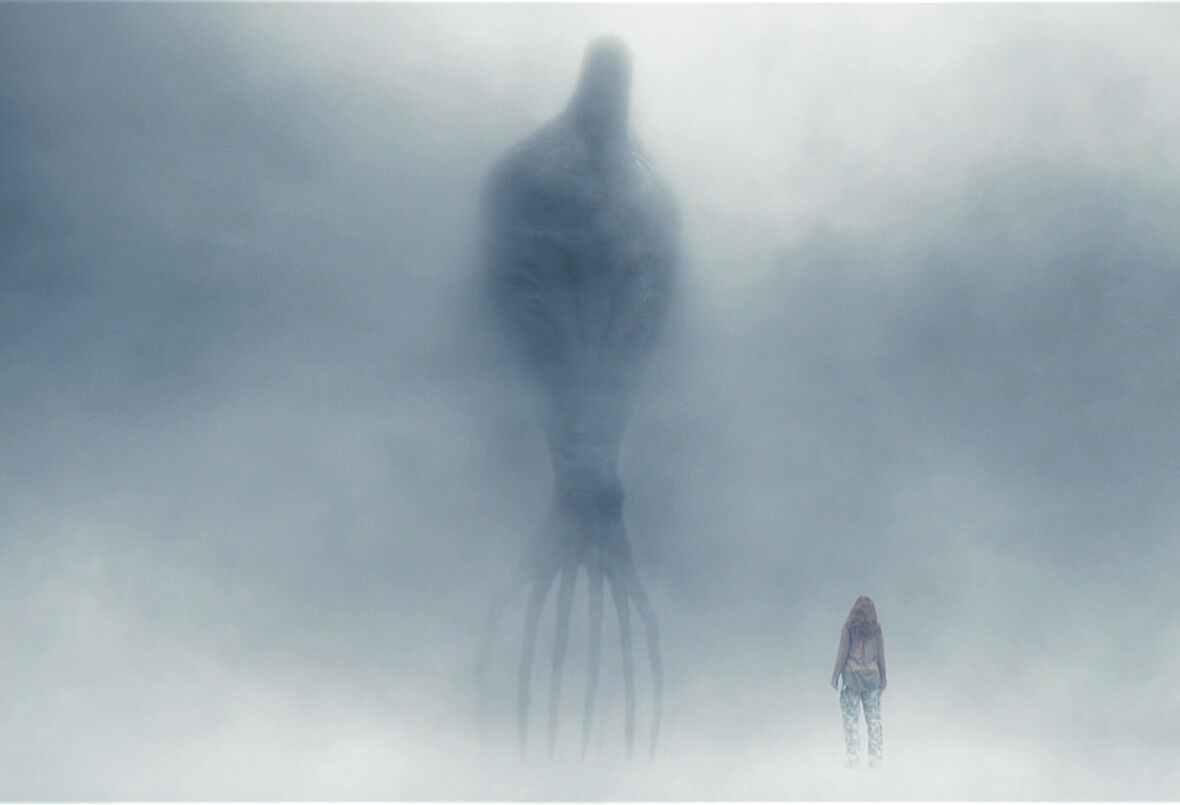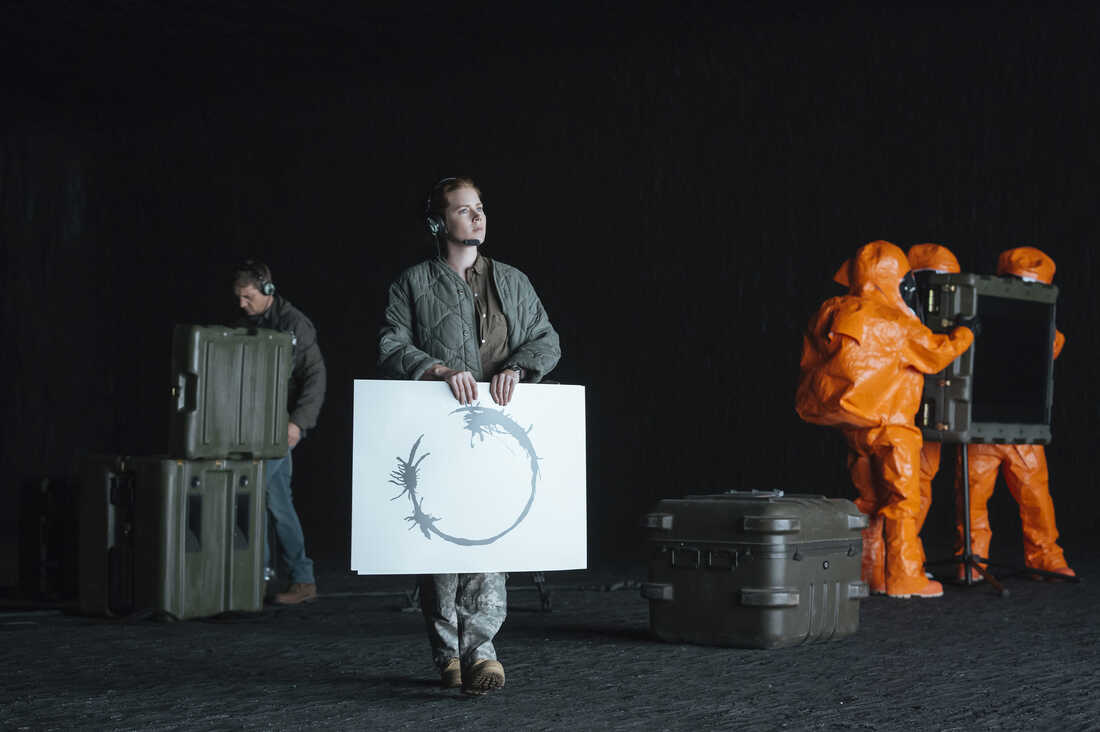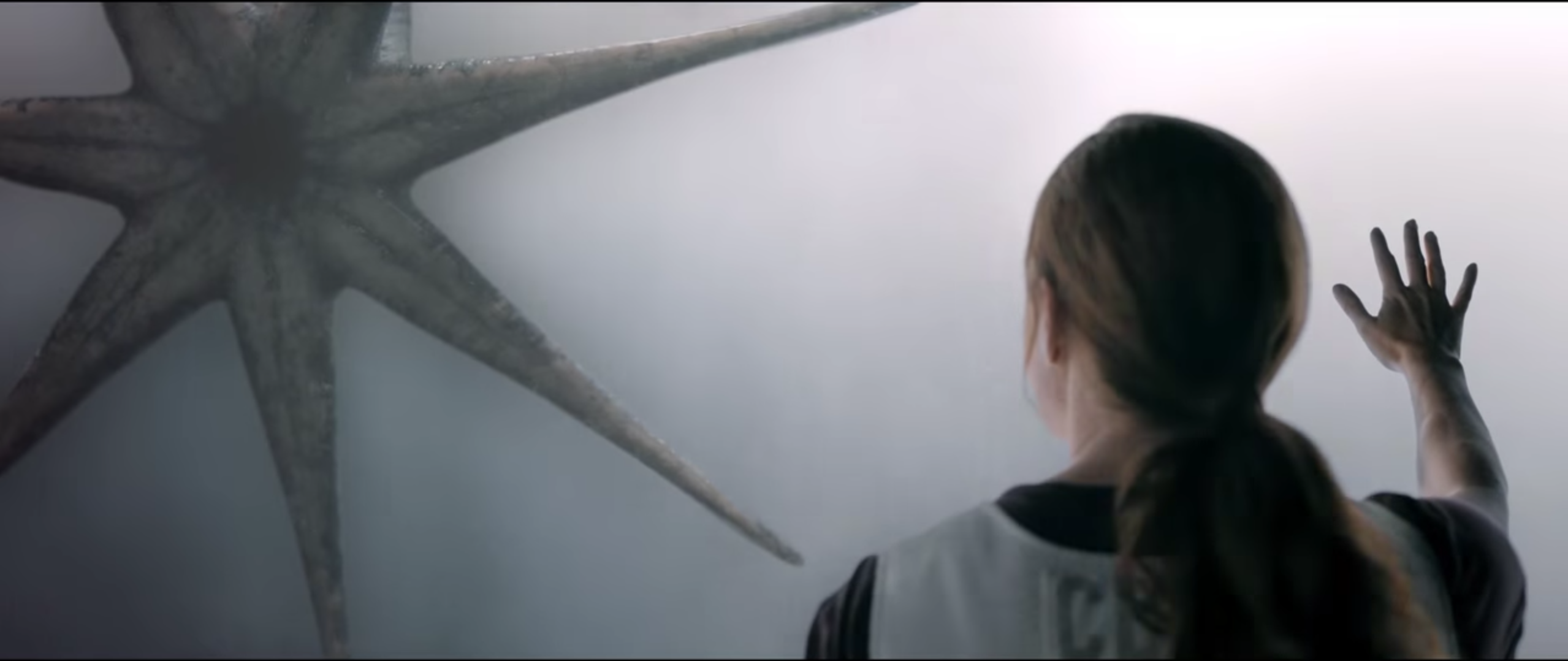The fundamental problem with science fiction is that it frequently contains notions that aren’t entirely plausible. However, science fiction may be divided into two types: hard sci-fi and soft sci-fi, the former of which is based on scientific reality.
To be more specific, hard sci-fi focuses on science fiction novels that are far more rational and in line with science that either exists or will most certainly exist in the near future.
Instead than constructing some elaborate VFX-driven spectacle of fictitious characters and cosmic space wars, the major objective is to employ genuine science to make the film more credible. One such example is Denis Villeneuve’s 2016 film Arrival, which is based on Ted Chiang’s acclaimed short tale Story of Your Life from 1998.
Arrival, a film written by Eric Heisserer, had its international debut at the Venice Film Festival before being distributed across the United States and Canada. The film, which starred Amy Adams in the main role and Jeremy Renner and Forest Whitaker in supporting parts, received eight Academy Award nominations and won the category of Best Sound Editing.
Easily recognised as one of the finest films of 2016, the film gained widespread acclaim for not just Adams’ outstanding performance, but also Villeneuve’s superb directing and the film’s study of extraterrestrial intelligence contact. The film is more of a mental conundrum, with topics of determinism, language, and communication explored.
In today’s video, we’ll not only discuss the film, but also go into the extraterrestrial species in depth.
The Movie

The film opens with Dr. Louise Banks’ voice speaking to someone. Viewers get to experience priceless moments of Louise with her daughter Hannah, from her birth to her childhood stages to her death, which occurred at an early age due to an incurable sickness.
Dr. Banks is a linguist and language professor and one day, during one of her lectures, a series of gigantic extraterrestrial vessels land across 12 different locations around the world, hovering just above the ground. With the world struggling to make out what this means, the affected nations begin sending military and scientific experts to surveil and study them. Dr. Banks gets a visit from Colonel G. T. Weber of the US Army who recruits her, and quantum physicist Ian Donnelly to examine the craft above Montana.
It is on board that Dr. Banks and Donnelly make contact with two cephalopod-like aliens, each boasting seven limbs. The duo calls them heptapods and Donnelly nicknames them Abbott and Costello. Banks and Donnelly soon begin their research on the composite written language of the aliens, primarily featuring palindrome phases drawn with circular symbols.
They also keep the other nations in the loop with the results. But with Dr. Banks immersing herself in the study of the language, she starts experiencing flashback visions of her daughter.
When Dr. Banks finally establishes a sufficient collective vocabulary to ask the aliens why they came to Earth, they respond with a sentence that may be interpreted as “offer weapon.” The other sites get more tense as a result of this. China construes this as ‘use weapon’ and it further leads them to breaking off communications, followed by other nations.
Dr. Banks reasons that the symbol read as weapon can also mean tool and that China’s interpretation is very likely to result from interconnecting with the aliens using an exceedingly competitive game called Mahjong. Dr. Banks re-enters the craft with Donnelly, unaware that some of the soldiers have planted a bomb inside.
The duo tries communicating with the aliens and a complex message with hundreds of tiny, scattered symbols is created in front of them. Right before the bomb detonates, Abbott ejects them from the vessel, knocking them unconscious.
Back at the base camp, when they wake up, the military is already gearing themselves up to evacuate just in case the aliens retaliate and the craft has now moved beyond anybody’s reach.
Meanwhile, Donnelly makes a significant discovery. He discovers not only that the time symbol appears throughout the message, but also that the text takes up exactly 1/12th of the 3D space on which it is projected. Dr. Banks then argues that the entire message has been distributed among all 12 ships, and that the aliens want all nations to share what they have learned.
By now, General Shang of China has also issued an ultimatum to his local alien craft that they have 24 hours to leave or the military will initiate a strike. Plenty of other sites follow suit and all of them have disconnected from each other setting in worldwide panic.
Dr. Banks decides to go to the Montana craft all by herself and the vessels sends down a transport pod. She faces Costello who tells her that as a result of the explosion, Abbott has been mortally injured. Costello then helps her understand that they have come to help humanity and in 3000 years, they will be requiring the aid of humanity in return.
It does not take Dr. Banks much time to comprehend that the weaponis their language that alters humans’ linear percipience of time and lets them experience flashforwards. It is then disclosed that all of her daughter’s memories were not things that have occurred in the past but future visions.
Also, about 18 months into the future, Dr. Banks and General Shang will meet each other at a United Nations event where the latter will thank her for reaching out to him on his private number and reciting his wife’s dying words, something that eventually convinced him to stop the attack. Well, cut to present, Dr. Banks takes CIA Agent Halpern’s satellite phone, contacts Shang and recites the very words to him.
The Chinese force withdraws, and stories from around the world begin to arrive. As Dr. Banks watches the spacecraft leave one by one, along with Donnelly, he proclaims his love for her. Of course, Dr. Banks sees further visions of herself with Hannah andalso Donnelly in the frame.
She knows the fate of her child, how and when she will die and that Donnelly will leave them after she discloses that she knew all about it. But in the present, Dr. Banks embraces him and tells him that she forgot how good it felt to be held by him.
Heptapod Extraterrestrial Species from Arrival Explored

Heptapod is a Greek phrase that combines the words “seven” and “foot.” They are more akin to sapient, mysterious, spacefaring alien species in the film, who have come to Earth to offer mankind their language in exchange for future assistance. There are two of them, both of whom are kind in character and seek to bring humanity together.
While one of them is nicknamed as Abbott, the other is named Costello.They have joint, arthropod-type limbs, each of them ending at a point where it splits open into a starfish-like hand boasting seven arms. When they walk, they usually have five of their limbs in the front and two behind to balance their movement. As far as the seven appendages are concerned, they only form the lower part of their body.
The upper section is pretty large and looks more like a giant squid. Grey in color, with skin that looks fleshyand has a rough texture, they seem to be devoid of eyes and mouth for that matter and are mostly seen in silhouettes. Costello has plenty of orifices on the upper part of its body and physically speaking, Abbott is taller than Costello. While both of them were given male names, it is not known whether they were both males, females, asexual or simply had a whole different classification.
Low-pitched growls, rhythmic beating, groaning, and trumpeting are common ways for Heptapods to communicate. Yes, they communicate using writing; specifically, circular forms produced with a black ink-like fluid. The circles that they make are modular, which further branch into several subsections, each indicating diverse meanings.
Mind you, there’s no correlation between what a heptapod says and writes. Unlike all human written languages, their writing is semasiographic. It conveys meaning but it does not represent sound. They are also able to induce a non-linear perception of time for those who are able to grasp their language.
They are quite advanced; so much so that they even madethe first contact with humanity by means ofa radio to impart their vocal recordings.It goes without saying that their bold entrance sent the whole world into chaos.
When it comes to the ships they sailed in, they are at least 1500 feet tall and are constructed of a black, stone-like substance with an unknown chemical makeup. There is no waste, gas, or radiation emitted by the shells. If the shells interact with one another, they do so without being detected.
The air between the shells is untroubled by sonic emission or light wave. What there is, is a small vertical corridor that leads one to a see-through barrier and that is where the humans are seen interacting with the Heptapods. The interior of the craft behind the transparent barrier is composed of a white, glass-type material featuring a jagged texture.
The atmosphere inside is thick, misty and it is on this medium that the Heptapodshave their inky logograms on display, communicate with each other and manipulate the elements contained within.
There’s a scene that has Dr. Banks being taken there via a small cigar shaped craft, which indicates that the atmosphere there does have some levels of oxygen. Also, while departing it is noticed that the shells turn into what looks more like a dense mist that eventually fades away and disappears entirely.
So, you’re still perplexed as to who they are? Well, other from being able to see and hear them, they leave no imprints, which make it difficult to respond to this question in any meaningful way.
Why did they park where they did? Even the world’s most decorated experts donot have an answer to this question. However, the most plausible theory is that they chose places onEarth with the lowest incidents of lightning strikes.
The Director At His Best

In a nutshell, Arrival is an extraterrestrial invasion film in which linguistics plays a significant part in both how humans attempt to communicate with their invaders and how language and memory affect human experiences.
Very few mainstream directors who are currently working in Hollywood are capable of coming up with movies that not only succeed in rising above their marketable ambitions but also manage to retain popular appeal. It goes without saying that Denis Villeneuve is one such director who conclusively falls in that category.
Villeneuve even consulted linguistics specialists from McGill University in order to create the alien language. Together with Heisserer, he devised a fully functional visual alien language.
So much so that they actually created a logogram bible that included over a hundred different entirely operative logograms, seventy-one of which are featured in the film itself. The circular inky alien language that the flick boasts was created by Montreal artist Martine Bertrand. It also happens to be the artist’s son who created the drawings of Hannah.
There’s no excuse not to see this film, especially when the finale is both a Mindbender and a heartbreaking one.
Future Prediction

True, the 2016 science fiction drama film left a lot of questions unresolved. What, for example, will happen after 3000 years? Or how would knowing the future change the world’s existing state? If you know what is going to happen, can you keep it from happening? Well, the movie did not have of these answers. But that did not stop the producers of the movie from picking up the rights to adapt another short sci-fi story – The Message by Ken Liu.
The story was originally published in the Interzone magazine back in 2012. Liu was encouraged to pen down the story partly because of his very experience as a new parent.
The story follows an archaeologist who reunites with his estranged daughter while on a trip to study a long-extinct extraterrestrial society on a faraway planet. On the planet, the team encounters several issues that ultimately connect to the aliens’ fate as well as their personal relationship.
Apparently, the story features all the trademarks and ingredients that brought director Denis Villeneuve’s opus such considerable commendation. Just imagine this – a father and his daughter’s bonding set against the backdrop of some prehistoric alien ruins. Add to that a mysterious problem that the duo has to confront at its core. Well, if you ask us, we think it’s already a hit!
The adaptation will be produced by the production firms 21 Laps Entertainment and FilmNation Entertainment, which are now looking for a director and a screenplay.
